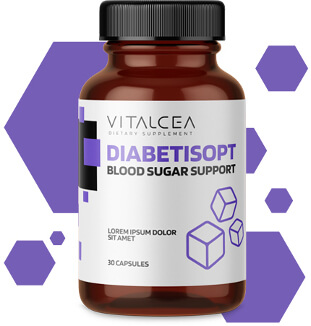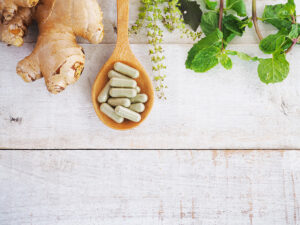

ABOUT SUGAR WITHOUT SWEETENING:
How to effectively lower blood sugar levels?
When it comes to sugar, it’s not worth giving sugar-coated tips, as they can do more harm than good. The topic is too serious, and our body can pay dearly for ignoring it. So what to do when the blood sugar level is far from normal – too high or too low?
When your glucose levels are too high, insulin will help lower your glucose levels. For people with diabetes, too high blood sugar levels are a sign that they may need synthetic insulin. In less dangerous situations, physical activity alone can help lower this level.
When glucose levels drop below 70 mg / dL, it is considered too low. This condition, also known as hypoglycaemia, can have dangerous consequences. Hypoglycaemia may occur when the diabetic misses medication. It can also occur when we eat less than usual and exercise excessively. Before we discuss this topic in more detail and try to equalize the sugar level – let’s first equalize the level of knowledge and answer the question, what is glucose at all?

What is glucose?
You may know it under a different name: “blood sugar”. Glucose is key to keeping internal organs and systems in full working order. When its level is optimal, it usually goes unnoticed by us. But when we deviate from the correct results, the normal functioning of our body is disrupted.
Glucose is the simplest of carbohydrates, a monosaccharide. Along with fat, it is one of the body’s preferred energy sources in the form of carbohydrates. We obtain glucose from bread, fruit, vegetables and dairy products. We need such food to provide the body with the energy necessary for life. As we mentioned, blood sugar levels are essential for healthy functioning.
What Are Normal Glucose Values - How Do I Recognize Diabetes?
Maintaining normal glucose levels is an important part of the healthy functioning of the body. People with diabetes must pay particular attention to glucose levels. Before eating, healthy forks are 90-130 milligrams per deciliter (mg / dL). After an hour or two, this value should be less than 180 mg / dL.
There are many reasons why your blood sugar may spike. Some triggers include:
- heavy meal,
- stress,
- hidden disease,
- lack of physical activity,
- skipping diabetes medications.
Remember that elevated blood sugar does not always mean diabetes – it can be prediabetes.
What are the symptoms of high blood glucose?
In order to accurately assess and diagnose diabetes, precise clinical tests are required, preceded by a complete blood count. High glucose levels give rise to characteristic symptoms, primarily polyuria. A disturbing sign suggesting the onset of diabetes may be unnatural dry mouth coupled with an increased feeling of thirst.
If blood sugar levels are worrying, it can lead to a number of negative consequences, such as:
- neuropathy
- heart diseases,
- blindness,
- problems in the joints and limbs, especially the feet,
- severe dehydration
- coma.
How to lower your blood sugar when it's too high - what to do?
It is best to monitor your glucose with the support of your doctor. In practice, we can regulate glucose through diet, lifestyle changes, weight loss and dietary supplements. Physical exercise won’t hurt either!
One way to lower your glucose levels quickly is to inject insulin. However, if it is consistently high, you should take your medication regularly and support your body in the fight with effective dietary supplements.
It is worth reaching for safe support in the form of Diabetisopt. It contains mulberry, which helps to stabilize glucose levels. The dietary supplement has active ingredients (including chromium) that support proper metabolism, help maintain a good level of blood lipids, support insulin production, and participate in the control of cholesterol levels.
Returning to the diet itself – it is worth introducing the following products to reduce plasma glucose into the daily menu, including:
- millet, buckwheat, pearl barley,
- oat flakes,
- wholemeal and rye bread,
- skim dairy.
Meet our blood sugar supporting product
What does the glycemic index of products mean in the context of diabetes?
Over 3 million people in Poland suffer from diabetes, of which as much as 20% are not aware of their disease. We know that a diabetic should take appropriate medications, but dietary recommendations are also important – in particular, controlling blood glucose levels, i.e. blood glucose levels. The glycemic index is an index that indicates the percentage rate of increase in blood glucose after consuming certain products compared to the increase in the same amount of carbohydrate in the form of pure glucose.
When we eat a product containing carbohydrates in the body, the level of glucose in the blood increases. Maximum results appear after 20, 30 minutes and gradually return to the fasting level over the next 90, 180 minutes. The concentration of sugar in the serum depends on the amount and type of carbohydrates consumed, and taking into account the glycemic index of the products allows better glycemic control.
For better food choices, the following values of the glycemic index were adopted:
- low - below 55,
- medium - between 55 and 70,
- high - over 70.
It is worth knowing that easily digestible carbohydrates with a high index cause a rapid increase in glucose concentration, and the consumption of slowly digestible carbohydrates with a low index slowly raises blood sugar levels.
Why is it worth doing a glucose test?
This test is especially important in people genetically at risk of developing type 1 diabetes, in the case of type 2 diabetes and insulin resistance, as well as in pregnant women. Glucose disturbances can manifest as increased thirst and appetite, frequent urination, drowsiness, infections, body weakness or weight gain.
What products lower sugar levels?
The foods you eat have a big impact on your glucose levels. Remember to eat regularly as skipping meals can cause your blood glucose to rise and fall.
Thanks to scientific discoveries, knowledge about the exemplary menu of diabetics is no secret. Get to know the best meals and try to plan them in advance. This will reduce the likelihood of unhealthy snacking and help you save time.
1. Vegetables low in starch.
These are one of the best foods for diabetics. Not only are they satiated, they are also full of essential vitamins and minerals that help regulate your sugar levels. Since they are whole foods with trace amounts of sugar and high in fiber, you can eat as many non-starchy vegetables as you want without worrying about blood sugar. To get the most out of it, go for crunchy, fresh, canned or frozen ones with no salt or sauces added. First of all: artichokes, asparagus, avocado, broccoli, cabbage, cauliflower, celery, cucumbers, green beans, mushrooms, olives, onions, squashes, tomatoes, zucchini.
These are one of the best foods for diabetics. Not only are they satiated, they are also full of essential vitamins and minerals that help regulate your sugar levels. Since they are whole foods with trace amounts of sugar and high in fiber, you can eat as many non-starchy vegetables as you want without worrying about blood sugar. To get the most out of it, go for crunchy, fresh, canned or frozen ones with no salt or sauces added. First of all: artichokes, asparagus, avocado, broccoli, cabbage, cauliflower, celery, cucumbers, green beans, mushrooms, olives, onions, squashes, tomatoes, zucchini.
2. Greens.
Many leafy vegetables are considered non-starchy vegetables, but deserve a separate chapter. They are packed with nutrients and contain far fewer digestible carbohydrates than other vegetables. This means that you can eat without fear of a significant increase in blood sugar levels. Spinach and kale are excellent in this case, as they have a very high level of vitamin C. Vitamin C helps in treating people with type 2 diabetes and can affect well-being in general. Green leafy vegetables also contain antioxidants that help protect your eyes from diabetic complications.
Many leafy vegetables are considered non-starchy vegetables, but deserve a separate chapter. They are packed with nutrients and contain far fewer digestible carbohydrates than other vegetables. This means that you can eat without fear of a significant increase in blood sugar levels. Spinach and kale are excellent in this case, as they have a very high level of vitamin C. Vitamin C helps in treating people with type 2 diabetes and can affect well-being in general. Green leafy vegetables also contain antioxidants that help protect your eyes from diabetic complications.
3. Fatty fish.
Regardless of whether you have diabetes or not, fatty fish should be on your plate once a week. This is one of the healthiest foods. Oily fish, such as salmon, halibut, mackerel, herring and eel, provide our body with a significant portion of omega-3 fatty acids (DHA and EPA) that can help protect the heart from potential diabetes complications. Eicosapentaenoic acid and docosahexaenoic acid protect blood vessels, reduce inflammation and improve the functioning of the arteries. Since people with diabetes have almost doubling the risk of developing heart disease and stroke, including oily fish in the diet can reduce the risk of serious complications. Additionally, oily fish is an excellent source of protein that will help you feel full and control your weight.
Regardless of whether you have diabetes or not, fatty fish should be on your plate once a week. This is one of the healthiest foods. Oily fish, such as salmon, halibut, mackerel, herring and eel, provide our body with a significant portion of omega-3 fatty acids (DHA and EPA) that can help protect the heart from potential diabetes complications. Eicosapentaenoic acid and docosahexaenoic acid protect blood vessels, reduce inflammation and improve the functioning of the arteries. Since people with diabetes have almost doubling the risk of developing heart disease and stroke, including oily fish in the diet can reduce the risk of serious complications. Additionally, oily fish is an excellent source of protein that will help you feel full and control your weight.
4. Nuts and eggs.
Other fatty foods that help control diabetes and lower blood sugar are nuts and eggs. Nuts are high in fiber and have a low glycemic index, so they don’t raise your blood sugar. However, it is important to distinguish here, because some of them have a very high level of digestible carbohydrates. The most recommended species for diabetics are almonds, Brazil nuts, cashews, hazelnuts, macadamia nuts, pecans, pistachios and walnuts. If you are keeping an eye on your weight, eat nuts in moderation. Even though they are high in healthy fats, they are still fatty and shouldn’t be overdone.
Other fatty foods that help control diabetes and lower blood sugar are nuts and eggs. Nuts are high in fiber and have a low glycemic index, so they don’t raise your blood sugar. However, it is important to distinguish here, because some of them have a very high level of digestible carbohydrates. The most recommended species for diabetics are almonds, Brazil nuts, cashews, hazelnuts, macadamia nuts, pecans, pistachios and walnuts. If you are keeping an eye on your weight, eat nuts in moderation. Even though they are high in healthy fats, they are still fatty and shouldn’t be overdone.
Eggs are also a great source of healthy fats that are beneficial in controlling diabetes. They can actually improve insulin sensitivity and reduce inflammation. At the same time, they provide antioxidant benefits by helping to reduce the amount of free radicals in the body. If you include eggs in your diet, remember that the yolk is important because this is where most of the nutrients are found.
5. Seeds.
It is known that certain types of seeds can control blood glucose levels. The two best seeds for diabetics are chia seeds and flaxseeds. Chia seeds are full of fiber and low in digestible carbohydrates. In addition, it has been found in studies that they actually lower blood sugar levels. Flaxseed also helps control sugar and reduce the risk of heart disease and stroke. They are best used in the form of ground seeds.
It is known that certain types of seeds can control blood glucose levels. The two best seeds for diabetics are chia seeds and flaxseeds. Chia seeds are full of fiber and low in digestible carbohydrates. In addition, it has been found in studies that they actually lower blood sugar levels. Flaxseed also helps control sugar and reduce the risk of heart disease and stroke. They are best used in the form of ground seeds.
6. Natural fats.
Extra virgin olive oil has been known for centuries for its myriad health benefits. It is one of the most effective products in reducing the possibility of cardiovascular problems. It contains a number of antioxidants that help reduce inflammation, protect cells and lower blood pressure. It is good to choose the best olive oil – low acidity, pour it over salads, use it in marinades or cooking vegetables.
Extra virgin olive oil has been known for centuries for its myriad health benefits. It is one of the most effective products in reducing the possibility of cardiovascular problems. It contains a number of antioxidants that help reduce inflammation, protect cells and lower blood pressure. It is good to choose the best olive oil – low acidity, pour it over salads, use it in marinades or cooking vegetables.
Other natural fats that help to control diabetes include coconut oil, avocado oil, and any nut oil.
7. Apple cider vinegar.
Apple cider vinegar is very popular with healthy food fanatics for a reason. Fermented acetic acid helps to improve insulin sensitivity and lower fasting blood sugar. Due to the high acidity of apple cider vinegar, it is best to consume it when mixed with water to avoid tooth damage and irritation of the esophagus.
Apple cider vinegar is very popular with healthy food fanatics for a reason. Fermented acetic acid helps to improve insulin sensitivity and lower fasting blood sugar. Due to the high acidity of apple cider vinegar, it is best to consume it when mixed with water to avoid tooth damage and irritation of the esophagus.
8. Strawberries.
If you’re craving for sweets, try strawberries. They are actually loaded with antioxidants. Research has shown that strawberries lower cholesterol and insulin levels after a meal. If you don’t really like them, choose raspberries, blueberries or blackberries, which are usually lower in sugar than other fruits such as apples and bananas.
If you’re craving for sweets, try strawberries. They are actually loaded with antioxidants. Research has shown that strawberries lower cholesterol and insulin levels after a meal. If you don’t really like them, choose raspberries, blueberries or blackberries, which are usually lower in sugar than other fruits such as apples and bananas.
What are the lessons from a sugar-lowering diet?
Diabetes mellitus does not imply judgment and a ban on eating your favorite foods. However, to be on the safe side, you should monitor your blood glucose levels. By including these foods in your daily diet, you’ll be providing your body with the food it needs. At the same time, it also allows you to allow yourself to eat something less healthy from time to time.
Excluding ingredients from the diet
We absolutely should avoid any kind of processed food that raises blood sugar levels. Most often, such products contain sodium, sugar, and trans fats. For this reason, we should exclude from our menu:
- large portions of fruit consumed as part of one meal (especially very ripe fruit),
- pale flour grain products (e.g. wheat bread and pasta, white rice)
- sweet dairy products,
- cakes, sweet rolls, chocolate, candies and other sweets,
- fruit preserves, including jam, marmalade and preserves,
- sweetened carbonated and non-carbonated drinks.
Fruits to Avoid
First of all, be careful with any fruit rich in sugar, such as watermelons, dried dates, sweetened cranberries, raisins, figs, mandarins, mangoes, kiwi fruit, pineapples and ripe bananas.
People with elevated sugar levels should eat grain products
The day of a person who cares about blood sugar should start with grain. Of course, some grains are healthier than others. There are many processed cereals on the market that are full of calories, carbohydrates, and sugar. Therefore, the most important task is to choose whole grain cereal with at least 3 grams of fiber per serving. It’s good to know that whole grains reduce the risk of heart disease, which is common in people with diabetes. Be guided by ingredients such as: barley, oats, quinoa, wheat bran, whole grain buckwheat, whole grain spelled flakes.
First of all, eat such a hot breakfast. Choose oatmeal, quinoa, or any other whole grain mixture and add chopped nuts. For example, combine half a cup of cooked oatmeal with 3/4 cup of blueberries and 2 tablespoons of chopped walnuts sprinkled with cinnamon. Read the label carefully to make sure the cereals are made from whole grains and have no more than 6 grams of sugar. Avoid adding dried fruit, sugar, or other sweeteners such as agave or honey. Choose unsweetened almond milk, which has fewer carbohydrates than cow’s milk.
Sugar-lowering spices
Spices such as cinnamon and turmeric are readily available foods that can help you control your diabetes. They should be part of our diet every day. Cinnamon can be added to almost any food or drink to boost the flavor and add some energy to your food. Studies have shown that cinnamon helps lower blood sugar levels, improves insulin sensitivity and lowers the level of hemoglobin A1C. Turmeric lowers blood sugar levels, lowers the risk of developing heart disease, and benefits kidney health. Just remember to mix turmeric with black pepper, because such a composition activates the beneficial ingredient curcumin. Other spices to include in your diet include cloves and cumin.
Are there any other ways to lower my blood sugar?
There is no magic way to lower your sugar levels, but the underrated, cheapest and healthiest physical activity is still extremely effective. But remember that if your lifestyle has been a couch and TV lifestyle so far, it is better to introduce your movement gradually and carefully. It is safest to consult a doctor and a trainer to adjust the intensity of activity to the state of health and individual abilities. It is good to start with half an hour walks, preferably 2 or 3 times a week, increasing the length of the walks as you grow in condition. Of course, when moving, we do not forget about proper hydration of the body, because when practicing sports, the risk of hypoglycaemia increases.
Control your sugar levels and live a healthy life
Monitoring blood glucose is an important step in managing diabetes. Knowing your results and statistics helps you in contact with your doctor, assessing the development of your disease and in your treatment plan. Adherence to a healthy and balanced diet, exercise, and taking medications and dietary supplements as per individual recommendations are essential and can have a positive effect on maintaining normal glucose levels.


